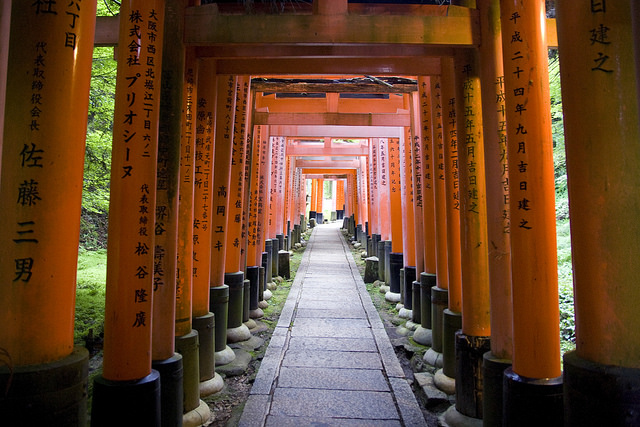If colorful shrines, peaceful temples, kimonos, and tranquil gardens come to mind when you think of Japan, you might be imagining Kyoto. Once Japan’s cultural and political center for 1,100 years, the former imperial capital is home to 2,000 temples and shrines and 17 historical sites. From soaking in an onsen to participating in a traditional tea ceremony, Kyoto is the place to go when you want to immerse yourself in authentic Japanese culture. Flying to Kyoto in a private jet is a rewarding experience that will make it simpler to adjust to the change in time zone.
Sleep
Hiiragiya
Constructed in 1818 for provincial nobility visiting the imperial city, Hiiragiya is a refined hotel known for its simplistic, elegant beauty. The inn’s new wing blends modern design with traditional Japanese architecture and feature cedar baths and private gardens.
Tawaraya
The Okazaki family founded Tawaraya 300 years ago. The inn has an elite following and is infamously difficult to book due partly to the fact that it doesn’t have a website. Guests celebrate Tawaraya for its impeccable service and hospitality, as well as its beautiful gardens.
Ritz-Carlton Kyoto
The sophisticated Ritz-Carlton graces you with views of the Eastern Mountains and Kamo River. The downtown hotel pays tribute to Kyoto’s rich heritage and offers accommodations with spacious layouts and luxurious details.
Eat
Mankamero
Specializing in yusoku ryori since 1722, Mankamero originally crafted dishes for the Imperial Court. When you dine at the two-Michelin-star establishment, you’ll see tradition steeped in every element—from the elaborately dressed chef to the pedestal plates on which the “dismembered” fish course is served.
Manaratei Nishiki
Japanese-based cuisine with Asian and European influences, Manaratei Nishiki is a local favorite with a seasonal menu boasting a wide range of selections. The restaurant is in a traditional machiya, has a historic atmosphere and features ingredients from the Nishiki Market. For a more intimate experience, ask for a table on the second floor, under the eaves, and order the chef’s choice course.
Kikunoi
Headed by world-renowned chef and owner Yoshihiro Murata, who spent a lifetime studying Japanese and French cuisine, three-Michelin-star Kikunoi on the northern side of Kodai-Ji Temple pays careful attention to every aspect of the lavish dining experience. The chef is committed to using the best local ingredients to make every dish explode with flavor. Guests are seated in private dining rooms for a seasonal multi-course meal, which is as elegantly presented as it is delicious.
Play
Temple Hop
Kawakatsu Hata founded Kōryū -Ji in 622, making it one of the oldest temples in the area. Fushimi-Inari Taisha is one of the oldest shrines and features thousands of red gates lining a mountainside path. A retirement cottage that’s hard to miss, Kinkaku-Ji (Temple of the Golden Pavilion) was converted into a temple in the 15th century. Featuring an elaborate entryway, Ginkaku-Ji (Temple of the Silver Pavilion) pays homage to the Golden Pavilion. To enter the temple and garden complex at Koinzan Saiho-Ji (Moss Temple), you must first perform a simple, contemplative task for the monks.
Wander Gardens
Meticulously designed, Ryōan-Ji has one of the most famous Zen dry rock gardens in the world. Check out the contemplative gardens at Daitoku-Ji, particularly the rock-and-gravel garden at the Daisen-in sub-temple. If you seek something that resembles the works of 17th-century landscape designer Kobori Enshu, you’ll love the garden at Konchi-In’s sub-temple, Nanzen-Ji.
Visit Castles
Kyoto Gosho (Kyoto Imperial Palace) offers great guided tours, but you must first receive special permission from the Imperial Household Agency to enter the buildings. Nijō -jo (Nijō Castle), a World Heritage Site, was constructed in 1603 as a statement of power by the first Tokugawa shogun, Ieyasu. It features an impressive garden, moats, and towering walls.

